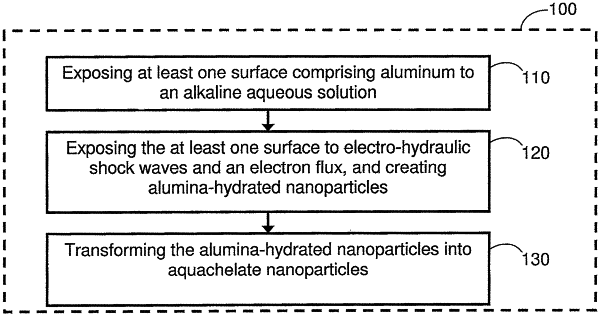| CPC C01F 7/42 (2013.01) [B82Y 40/00 (2013.01); C01F 7/428 (2013.01); C25B 1/00 (2013.01); C25B 1/04 (2013.01); B82Y 30/00 (2013.01); C01P 2002/82 (2013.01); C01P 2002/85 (2013.01); C01P 2002/88 (2013.01); C01P 2004/04 (2013.01); C01P 2004/64 (2013.01)] | 6 Claims |

|
1. A method of obtaining metal- or carbon-containing nanoparticles, the method comprising:
immersing at least a portion of a surface in an electrolytic bath comprising water to expose at least the portion of the surface to an alkaline aqueous solution, the surface comprising a metal- or carbon-containing material;
while at least the portion of the surface comprising the metal- or carbon-containing material is exposed to the alkaline aqueous solution, applying a voltage to the immersed portion of the surface and generating hydrogen gas and oxygen gas from the water via electrolysis, the applying the voltage includes exposing at least the portion of the surface comprising the metal- or carbon-containing material to electro-hydraulic shock waves and an electron flux, wherein at least the portion of the surface comprising the metal- or carbon-containing material undergoes electro-erosion which creates nanoparticles using atoms of the metal- or carbon-containing material, the nanoparticles comprising hydrated aluminum oxide and hydroxide complexes, the nanoparticles having a negative surface electrical charge; and
transforming the nanoparticles comprising the hydrated aluminum oxide and hydroxide complexes into aquachelate nanoparticles by attaching water molecules to the nanoparticles comprising the hydrated aluminum oxide and hydroxide complexes.
|